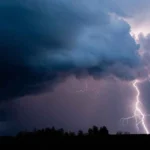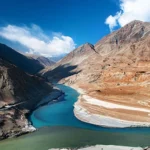
Sunset views at Ravens Nest looking towards Acadia National Park and Cadillac Mountain. Ravens Nest is located on the Schoodic Peninsula.
Acadia National Park is located in Knox/Hancock counties in the U.S. state of Maine. It encompasses the majority of Mount Desert Island as well as several smaller islands, totaling 47,452 acres of land. Acadia National Park was the first National Park established east of the Mississippi River. In 1916, the park was named Sieur de Monts National Monument. In 1919, it was renamed Lafayette National Park, and in 1929, it was renamed Acadia National Park to honor Acadia, a former French colony that included Maine. Every year, more than 2.3 million people visit the park.
The park was originally designated as Sieur de Monts National Monument by President Wilson.
The name Lafayette National Park was chosen to honor Marquis de Lafayette, an American Revolutionary War supporter. He was of French origin.
The park’s land was mostly donated by people who believed in preserving the land in perpetuity.
Cadillac Mountain, which is located within the park, is not only the highest mountain along the Atlantic Coast, but it is also one of the first places in the United States to see the sunrise each morning. It has a height of 1,530 feet.
Acadia National Park has a total of 26 mountains.
Jordan Pond is the park’s deepest lake. It reaches a depth of 150 feet.
Cadillac Mountain takes its name from a French explorer.
John D. Rockefeller Jr. was in charge of building many of the park’s miles of carriage roads.
The park is home to at least 40 different species of mammals, including moose, beaver, coyotes, and black bears.
Mountain lions and gray wolves once roamed the park, but they have since vanished.
During excavations of old Indian sites, the remains of animals that once lived on the island were discovered.
They discovered the remains of sea mink, Indian dog, lynx, and muskrat, among many other species. The sea mink has become extinct.
From mid-March to mid-August, Peregrine Falcons nest in Acadia National Park. The Precipice Trail is closed during this time to allow the birds to nest, as they were designated as an endangered species in the 1970s.
Wetlands cover 20% of the park’s land area. At least one rare plant grows in each of these wetland areas.
Thunder Hole is the name of a rock formation in the park. When waves roll in and shoot air and water up through the cavern, it creates the sound of thunder.
In 1947, a fire destroyed the eastern portion of Mount Desert Island.
Acadia National Park includes several islands in addition to Mount Desert Island, such as Sheep Porcupine, Little Moore, and Baker Island.
In the park, there are mountain ridges that resemble ice cream cones.
In the park, there are 120 miles of hiking trails.
From the park, you can see Humpback whales, snapping turtles, cormorants, hawks, and various reptiles and amphibians.
Acadia National Park offers visitors the opportunity to enjoy the ocean, lakes, mountains, woodlands, and wetlands.










I couldn’t agree more with your post on facts. In a time when so much information is being shared through social media and other channels, it’s crucial to have a solid understanding of what’s true and what’s not. Facts provide a solid foundation for discussions and decision-making, and they’re essential to building trust and credibility.
I’ve been a regular reader of your blog for some time now, and I wanted to express my appreciation for your consistently high-quality content. Your articles are informative, well-researched, and presented in a way that keeps readers engaged. Thank you for the valuable knowledge you share.